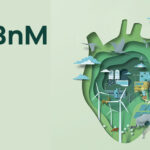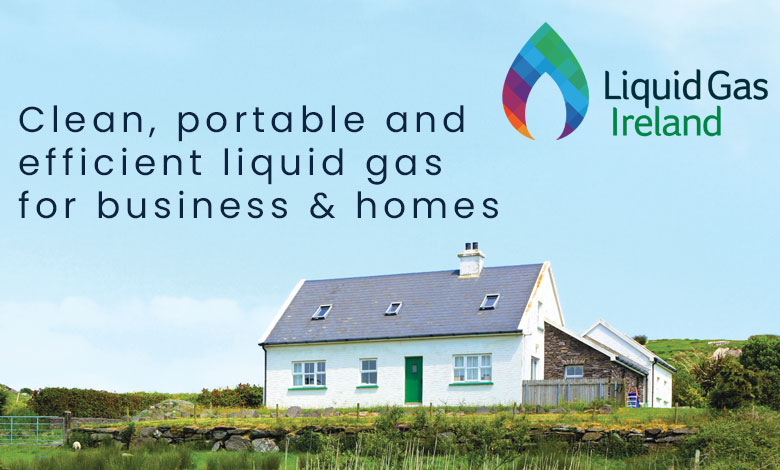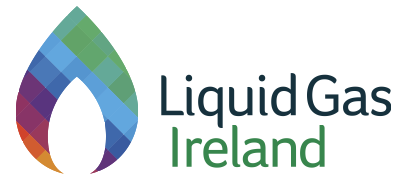
BnM: Powering Ireland’s net zero future
30th May 2025
Navigating Ireland’s Energy Transition – A Rural Ireland Perspective from Calor
30th May 2025Liquid gas sector well positioned to provide the solution for difficult to decarbonise buildings in rural Ireland

The new Government must take the opportunity to accelerate a cost effective ‘Just Transition’ to heat decarbonisation by embracing a suite of lower carbon and renewable energy options which include LPG and BioLPG.
The liquid gas sector continues to play a pivotal role in supporting the energy needs of Ireland’s rural communities, who face more difficult challenges in terms of decarbonisation. Homes in these areas tend to be older, larger, more likely to experience energy poverty, and face more challenging renovation pathways.
In our analysis of the most recent CSO Census data, LGI demonstrated how nearly 70% of households outside Dublin, Cork City and Galway City1 still rely on high carbon oil, peat, or coal as their primary energy source for home heating. A large majority of these households are in areas off the natural gas grid where switching to a heat pump system is often not logistically viable or is prohibitively expensive, leaving homeowners with limited alternative options to decarbonise their heating system.
As the new Government begins to set out the policy measures required to accelerate Ireland’s journey to net zero emissions by 2050, it is essential that a pragmatic approach is taken to ensure that all cohorts of Irish society are empowered to participate. For rural homes and businesses located off the natural gas grid, this approach should embrace the emissions savings available through a switch from oil to lower carbon liquid gas (LPG) and renewable liquid gas (BioLPG).
The Programme for Government commits ‘to explore the use of sustainable biofuels in existing home boilers to reduce emissions in cases where retrofits are not possible’. This commitment is underlined by pledges made by both Fine Gael and Fianna Fáil to ‘promote BioLPG as an alternative fuel for rural homes’ in their respective General Election manifestos. LGI is encouraged to see the need for a multi technology approach and the role of renewable fuels like BioLPG recognised. However, focus needs to immediately turn to building out policy mechanisms that unlock a broader approach to heat decarbonisation and provide more practical, affordable and inclusive solutions for rural homes and businesses.
The liquid gas sector is well placed to solve the problem of difficult to decarbonise rural homes and businesses located off the natural gas grid. Our member companies are already transitioning dwellings like these from oil to cleaner, lower carbon liquid gas. Already available and in use in Ireland today, BioLPG is chemically identical to LPG and can be ‘dropped-in’ to existing LPG boilers and appliances, an easy switch for consumers to make. It can also be blended with LPG which enables a phased, secure transition to 100% BioLPG.
A study produced by Gemserv on behalf of LGI, demonstrated how it’s possible to increase the BER for a typical 1970’s rural bungalow from D1 to B2, by installing a renewable ready gas boiler, along with standard building and fabric upgrades to the home and the installation of solar PV for just over €11,0002 . This is compared to the installation of a heat pump which potentially could cost more than €60,000 where a deep retrofit is required3 .
LGI continues to advocate for a ‘mixed technology’ approach which supports the use of lower carbon LPG and renewable BioLPG, combined with other renewable technologies, to make meaningful progress in decarbonising rural homes and businesses. LPG and BioLPG can also be used seamlessly in cutting edge heating systems, such as hybrid heat pump installations.
In delivering a ‘Just Transition’ to decarbonisation for rural Ireland, Government policy must ensure parity in supports available to both on grid and off natural gas grid energy consumers. These should be structured to assist with the additional costs associated in transitioning to all renewable fuels including BioLPG and must ensure a level playing field so that rural off natural gas grid consumers are not disproportionality burdened by cost.
For more information about the role of LPG and BioLPG in supporting the decarbonisation of rural off natural gas grid homes and businesses, visit www.lgi.ie


